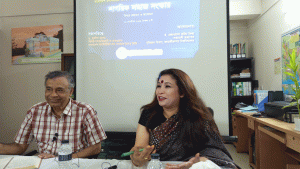
PBA Desk:
What is processed food?
Most foods are processed – changed, prepared or packaged – in some way before we eat them. They fall somewhere on a spectrum from minimally processed (like salad mix, bagged dry beans, roasted nuts or frozen fruits and vegetables) to what some nutrition experts refer to as highly or ultra processed (like ready-to-eat meals and snack foods).
Some processed foods have ingredients added, like sweeteners, oils, colors and preservatives. Some are fortified to add nutrients like fiber, calcium or vitamin D. Some are simply prepped for convenience (washed or chopped) or packaged to last longer. Processes such as pasteurizing milk, canning fruits and vegetables, and vacuum packing meats help prevent spoilage and increase food safety. Even foods labeled “natural” or “organic” can be processed.
If you eat a lot of highly processed foods, you risk getting too much sodium, added sugars and unhealthy fats. Highly processed foods contribute almost 60% of calories and 90% of added sugars in the American diet, according to a 2016 research study.
So what can you do if want to eat healthier? While it’s tempting to throw all “processed food” under the bus, the reality is you can’t avoid it entirely… nor should you! The key is knowing how to identify healthier processed foods and make smart choices in the grocery store and restaurants.
Choose healthier processed foods.
• Read food labels. This is the best way to know exactly what’s in a processed food. Choose products without a lot of sodium, added sugars, and unhealthy fats. Learn what to look for in the Nutrition Facts label, ingredients list and other package claims.
• Enjoy frozen and canned produce. Frozen and canned fruits and vegetables are convenient and affordable options that can be just as nutritious as fresh. Look for varieties without salty sauces and sugary syrups. Compare label info and choose items with the lowest amounts of sodium and added sugars.
• Look for the Heart-Check mark. The American Heart Association’s Heart-Check mark will help you find packaged foods that can be part a healthy eating pattern. This red and white icon on the package means the food meets specific nutrition requirements for certification.
• Make smart choices when eating out. Choose restaurants where food is cooked to order or there are designated healthier menu options. Communication is key. Ask how food is prepared, which items are made to order in-house vs. prepackaged, and if you can make substitutions. Request sauces, dressings and condiments on the side so you can decide how much is added.
Limit highly processed foods.
• Cook more meals at home. You don’t have to be a master chef to get your cook on! You can find lots of great recipes and brush up on your cooking skills online. Preparing food at home gives you the control over what’s added to it. It can save you money and be a great family bonding time.
• Swap out highly processed foods with less-processed options. Some examples: Make your own simple vinaigrette instead of buying bottled salad dressing. Add fruit to plain oatmeal, cereal and yogurt instead of buying the sweetened or flavored kind. Choose canned and frozen produce without salty sauces and sugary syrups. Slice up leftover roasted chicken or make a light tuna salad for sandwiches instead of using processed deli meat.
• Grow fruits and vegetables. If space is a challenge, look at container, indoor or community gardening. You’ll love the taste of ultra-fresh produce, and kids may be more likely to try fruits and veggies they’ve helped grow! If you don’t have a green thumb, shop the local farmers’ market for fresh seasonal produce.
• Snack smarter. Think crunchy nuts and seeds, cut-up veggies for dipping, fruits that hit the sweet spot, and easy homemade popcorn. Package up these healthier snacks in small containers and they’re just as convenient as that bag of chips!
Watch out for sneaky sodium.
About 70 percent of the sodium in the typical American diet comes from commercially processed and restaurant foods. In other words, we often don’t even know we’re eating it! And most of us are eating too much of it, which can lead to serious health problems.
Manufacturers use sodium to preserve foods and modify flavor, and it’s included in additives that affect the texture or color of foods. The food industry is becoming more aware that shoppers want less sodium in the products they make, but it’s still important to read the nutrition information on product packages.
Check how much sodium is in each serving. Compare brands and choose the product with the lowest amount of sodium.
Processed foods that can contribute a lot of sodium to your diet include breads, pizza, sandwiches, cold cuts and cured meats, soups, burritos and tacos, savory snacks, chicken, and cheese. And don’t rely on taste alone. Foods with excess sodium sometimes don’t taste salty, like some breads, cereals and pastries.
Learn the Salty Six – the top six sodium sources in the American diet – and how to find healthier options with less salt.
Source: heart.org
PBA/AH













